4 Southwestern PA State Parks for Fly Fishing, Family, and Fun
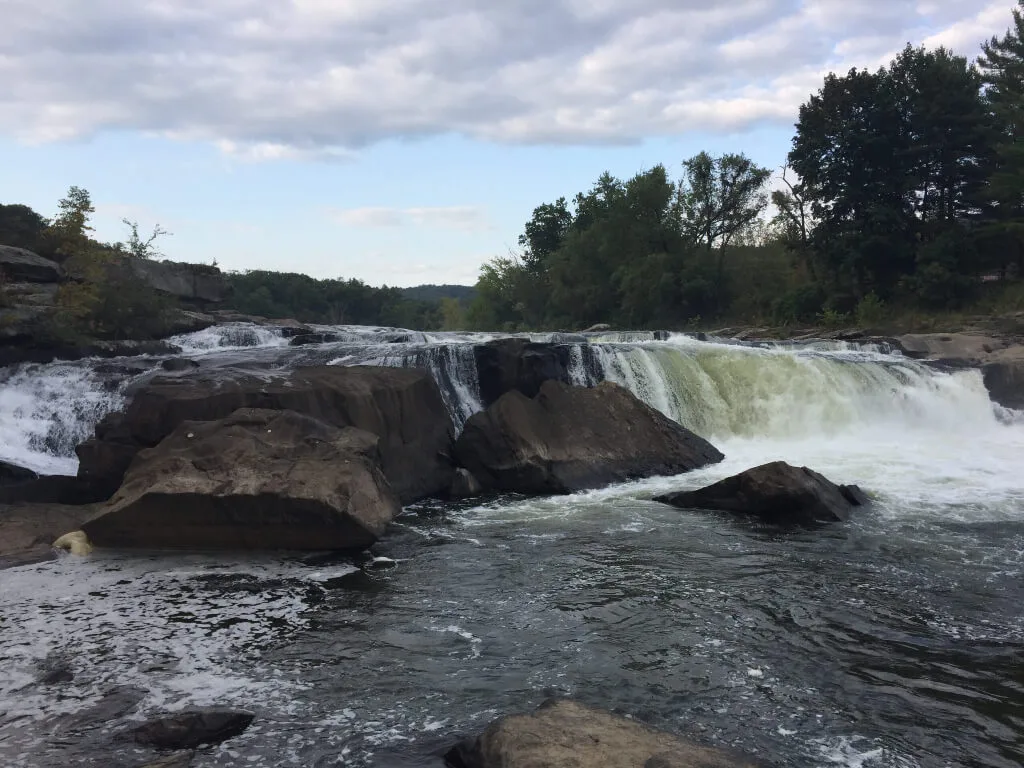
Pennsylvania includes 124 state parks spread out across the Commonwealth. Meaning, every resident in the state, regardless of region, county, city or town, has a state park within close proximity to their home to conveniently visit and enjoy. Add to this that day use and entry fees to all Pennsylvania state parks are free of charge, and this system of public use land for recreational purposes and natural beauty is truly a unique blessing.
Pennsylvania’s state parks are managed by the Department of Conservation and Natural Resources (DCNR) along with the state forest system, and the mission of this state government bureau is clear.
“The primary mission of the Department of Conservation and Natural Resources is to maintain, improve, and preserve state parks; to manage state forest lands to assure their long-term health, sustainability, and economic use; to provide information on Pennsylvania’s ecological and geologic resources; and to administer grant and technical assistance programs that will benefit rivers conservation, trails and greenways, local recreation, regional heritage conservation, and environmental education programs across Pennsylvania.”
Recreational opportunities in Pennsylvania state parks are many and vary from park to park. Nevertheless, every park in the state truly has outdoor interests for everyone. Popular activities include camping, hiking, walking, jogging, swimming, water play, playing on playground equipment, canoeing, sailing, kayaking, cycling, rock climbing, birding, wildlife viewing, star gazing, picnicking, winter sports and playing games such as basketball, wiffle ball, Frisbee golf, and volleyball.
State parks also provide public access to some of the very best hunting and fishing found anywhere in all of Pennsylvania. This results in hunters and fisherman flocking to these properties regularly. Nevertheless, based on perspective and personal sentiments, it is fly fishing for trout that might very well be the crown jewel of Pennsylvania’s state park fishing opportunities.
Four of the state parks in the southwestern region of the state provide fly fisherman access to enjoyable and exceptional trout fishing in both well known, popular waters and lesser known streams and creeks that require a bit more exploring and effort.
Laurel Hill State Park
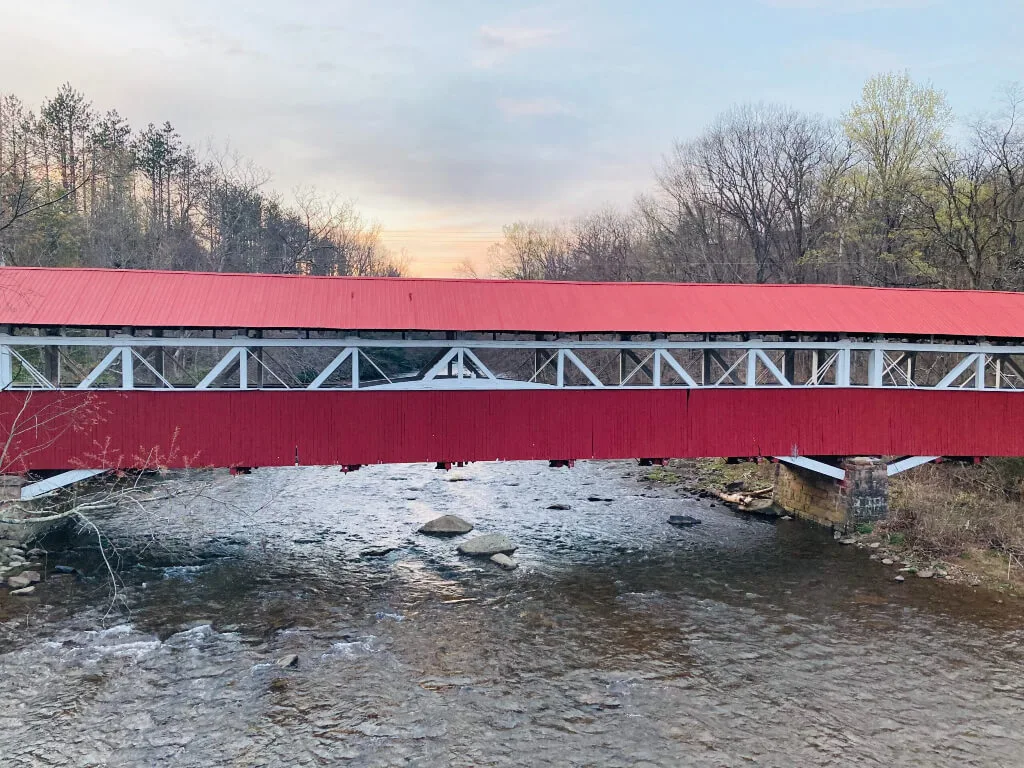
Laurel Hill State Park (LHSP) is unequivocally well maintained and clean. In fact, Jones Mill Run Dam is among the most photographed spots in all of Somerset County. A storied history combined with natural beauty and spectacular trout fishing puts LHSP at the top of the list for southwestern PA trout fishermen.
According to the sign near one of the park entrances, LHSP is the most intact and well-preserved Recreational Demonstration Areas (RDAs) created by the Civilian Conservation Corps (CCC) as part of Franklin D. Roosevelt’s New Deal of the 1930s. This small part of his far larger program sought to create labor jobs for young men from poor families across the United States. CCC laborers are responsible for building the dam and lake, roads and structures within Laurel Hill State Park. All of these features are not only still observable but also in use to this day. The history of the CCC is so important to LHSP that a monument honoring the service of these laborers has been erected within the park near the visitor center/office.
Laurel Hill State Park is an excellent choice for families with young children because of one primary feature: a groomed sandy beach with a playground and safe, shallow swimming area. The park also includes fifteen miles of maintained hiking trails rated easiest to most difficult. The 1.2 mile Hemlock Trail, a must for all visitors, along Laurel Hill Creek traverses a stand of old growth, virgin hemlock trees that date back to when George Washington, a young officer in the British Army, led his troops through Pennsylvania’s Laurel Highlands. Canoes, kayaks and stand up paddle boards can be rented for a fee at the beach area during the summer season and the small Laurel Hill Lake provides two boat launches for non-powered boats or those with light electric motors only.
In the winter time, as conditions permit, LHSP provides a lit sledding hill near the campground until 9:00 PM on weekends. A large campfire with split wood is available, too for sledders and spectators to warm themselves between runs. Again, this is the best park for families with young children!
Fifteen miles of park trails are open to mountain biking. Wildlife viewing within the park is remarkable, and according to the SP website, especially for owls. Barred and great horned owls are frequently heard and spotted in the park. More exciting still is that screech owls can be observed hunting insects in open fields and meadows. These tiny nighttime predators are known to nest within the park every year. Over 2,200 acres of Laurel Hill SP is open to hunting, trapping and dog training to properly licensed hunters during the state seasons.
Staying the night at LHSP provides several options from roughing it at a walk-to only tent campsite to a multi-room lodge with all modern comforts in a rustic, mountain setting. The campground includes 262 campsites with 149 having electric hook-ups. There are eight camping cottages that sleep five and include electricity, bunks and screened-in porches with picnic benches. Like all campsites, the cottages provide access to a shower house and water spigots. Two lodges can also be rented for an extended stay and these include all of the amenities of a home including a washer and dryer and indoor plumbing.
Fishing the Laurel Hill State Park Region
Laurel Hill Creek is a 38-mile tributary of the Casselman and Youghiogheny Rivers. It joins the Casselman only a few yards above the Yough near the town of Confluence. The headwaters of Laurel Hill Creek are high in the Laurel Highlands near the town of Bakersville. Good news for trout fisherman is that nearly the entire length of this well-known destination is stocked with rainbow and brown trout. A unique feature of Laurel Hill Creek is that it includes two separate Delayed Harvest Artificial Lures Only (DHALO) sections. The first, closer to the headwaters, are in a walk-in only, rugged section of Laurel Hill State Park and is also a Keystone Select waterway. The second DHALO is near the mouth of Laurel Hill Creek upstream from the Casselman River. All of the nearly 30 miles of stream in between the project waters remain stocked put-and-take approved trout waters.
For those anglers staying at LHSP, the most convenient section to fish is the DHALO section found 100% within park boundaries. To access this section of stream, a multi-car parking area can be found adjacent to the bridge right where Laurel Hill Creek enters Laurel Hill Lake. Well-worn angler paths can be found on both sides of the stream, so although this section of LHC is walk-in only, access is very convenient. The DHALO within the park is remarkably gorgeous. The banks are steep, covered in rhododendron and old-growth hemlock forest, keeping the stream through this section very well canopied and water temperatures cool well into the summer months.
Many different water types can be found here from pockets and runs to riffles and pools. Willing stocked rainbows and browns can be found holding in all of these water types, and do not forget about the chances of tangling with a large Keystone Select bruiser! Persistent fishermen concentrating on riffles and pocket water can also catch native brookies in this section of Laurel Hill Creek.
Wading can be a bit demanding due to large, misshapen, slippery boulders, so some anglers may choose to carry a staff. However, this is not a dangerous creek by any stretch of the imagination and a slip or fall is likely going to result in a drenched fisherman with only a hurt ego.
Laurel Hill Creek within the State Park is only the tip of the iceberg considering fishing opportunities. Downstream from the park, the creek flows for thirty more odd miles! As a matter of fact, my favorite fishing on all of Laurel Hill lies within sections of the put-and-take water and not either of the DHALOs. Fishermen staying at the park have many, many miles of Laurel Hill Creek to explore during their visit. So much so that they cannot fish it all at once and will surely want to return at a later time.
Because of work and family obligations, I reside in the greater Pittsburgh area. For now. However, my daydreams continually take me away from the city and into the mountains, forests and waterways. Laurel Hill State Park and Laurel Hill Creek offer a great respite from suburban life. This park is truly special for me because it is my escape to the mountains, woods, and water closer to home, and I know you will love visiting here, too.
Ohiopyle State Park

At 19,052 acres, Ohiopyle is one of the largest state parks in the system. Additionally, it is among the most visited and routinely makes the top 25 list of must-see Pennsylvania State Parks. If Laurel Hill offers quiet and solitude and is the best destination for families in southwestern PA, then Ohiopyle is the place to be for adventurers and outdoor thrill seekers. The large size of this park coupled with vast remote areas makes this among the most rugged spots in all of the Laurel Highlands.
Foremost, Ohiopyle is a whitewater boater’s paradise. The Middle Yough, as it is named by the state park, includes Class I and II rapids. This section of river is recommended for beginning kayakers and rafters and experienced canoeists. Many families, church and Boy and Girl Scout groups with youngsters raft this section to dip their toes into whitewater boating as the rapids are less intense and severe.
The Lower Yough begins at the base of the waterfalls in the state park and extends seven miles downstream. As the park website explains, “The numerous class III and IV rapids make for exciting rafting that should only be attempted by experienced whitewater boaters.” The website also claims that this is the busiest section of whitewater anywhere east of the Mississippi River. Wanting to tackle these intense rapids head on requires those looking for adventurous thrills, and guided trips are recommended.”
The Great Allegheny Passage is a crushed limestone nonmotorized path that extends from Pittsburgh, Pennsylvania, to Washington DC. This trail bisects Ohiopyle State Park not all that far from where it crosses the eastern continental divide near the Mason-Dixon Line in Maryland. Ohiopyle is a hub for serious and recreational bicycle tourists. Whether pedaling a short 25-mile out and back or thru-riding the entire length of the Allegheny passage, Ohiopyle is a premiere section of this beautiful rail trail. Outside of fly fishing, cycling is among my other passions. I ride the Great Allegheny Passage trail frequently because of the scenic beauty and fantastic maintenance as well as convenience to my home south of Pittsburgh.
Finally, for those seeking greater adventure than a day of fly fishing, Ohiopyle offers intense backcountry camping and hiking opportunities. Ohiopyle is the southern terminus of the popular and storied 70-mile Laurel Highlands Hiking Trail. Experienced, seasoned backpackers hike the steep, rocky, rugged sections and spend the night on the trail in provided Adirondack style shelters or tents. The beginning of the trail begins near the Youghiogheny River at 1,200 feet in the park traversing a series of quick ups and downs until, rather abruptly, steeply climbing to the top of the ridge near the view of Sugarloaf Knob over 2,700 feet. This section of trail is a ball-buster for even the fittest hikers! I know because I have done it on three separate hiking trips over the years.
Outdoor recreation opportunities within the greater Ohiopyle region do not stop there. For those interested in history, several French and Indian War sites are located close by, including Fort Necessity, where a young officer in the British Army named George Washington experienced combat for the first time. For those looking for a stay at a luxury destination, book a retreat at Nemacolin Woodlands Luxury Resorts. For the artistically inclined, Frank Lloyd Wright’s famous houses, Fallingwater and Kentuck Knob, are very close to the state park. Finally, for the hobby or professional photographer, Ohiopyle also contains six named and well-photographed waterfalls within the park boundaries and many more that are unnamed.
Ohiopyle is home to the Kentuck Campground and offers campsites for tenting and recreational vehicles with some electric hookups. Camping cottages, yurts and 27 walk-to only sites are available as well.
Fishing the Ohiopyle State Park Region
Because of its expansiveness, Ohiopyle trout fishing can be divided into three principal sections: Meadow Run, The Middle Youghiogheny River, and Confluence.
Meadow Run
Next to Laurel Hill Creek, Meadow Run is my favorite fly fishing destination in the Laurel Highlands. If visiting Ohiopyle, please read my other article on this site before your trip as it will provide invaluable insight to fishing this stream.
Meadow Run begins well outside of the state park. Nevertheless, it is the section of stream within Ohiopyle that provides some of the best fly fishing for trout in this entire region. Meadow Run is a medium trout stream by Pennsylvania standards. Entirely within park boundaries is the popular DHALO section. This project water receives both spring and fall stockings and some trout do hold over provided we don’t experience prolonged drought-like conditions. In addition to bursting-at-the-seams spring stocking efforts, Meadow Run is also a Keystone Select stream with above-average size fish. Latching onto one of these bruisers is always exciting! Don’t throw out the possibility of catching a wild trout or two either in certain sections of Meadow Run. I have caught native brookies and what seemed to be small, stream-bred rainbows as well.
Speaking candidly as a wading angler, fishing the Yough is not for me. This is very, very big water better fished as a float trip. Even during low water flow periods, the Yough is sketchy wading with swift, heavy water, deep pockets and runs and class I and II rapids. One misstep and an angler’s legs can be ripped out from underneath, sending him or her into the swift currents. Honestly, I fall into the water two to four times every year while fishing. Typically, this results in an annoying soaking with drenched gear and a case of the shivers. Word of caution, for in the Yough, falling in can be downright dangerous and life threatening in many sections of the river.
However, trout fishing on this large river is exceptional and the Yough regularly produces some of the largest trout in the entire state. Even though this river is not my preference, any article discussing trout fishing in the Laurel Highlands must include the mighty Youghiogheny River.
This 27-mile, year-round fishery is made possible by regulated cold water releases from the Youghiogheny Reservoir coupled with fingerling trout management and stocking. Nearly the entire Middle Yough lies within Ohiopyle State Park.
Fishing the Middle Yough begins at the Ramcat Run boat launch and extends to just above the waterfalls at the takeout in the state park. Trout can be found throughout this section, but as is the case with all large river systems, concentrations of fish are greater where you find habitat and structure.
Accessing the Middle Yough is challenging as there are no roadways paralleling the river. This is another reason that makes floating a more viable option. Another option is riding a bicycle along the Great Allegheny Passage Trail that more or less follows the river along its course. This method provides the cycling angler access to the entire Middle Yough with the ability to fish those spots more conducive to careful wading.
Confluence
Confluence is the name of a small town nestled amongst the mountains where Laurel Hill Creek and Casselman River join the Youghiogheny River. Because of these waterway features, trout fishing opportunities abound.
Confluence is where the Youghiogheny tailrace is located. This is the short section of river immediately at the discharge from the bottom release dam for a short section downstream. Wading in the tailrace is a bit more tame than in the Middle Yough just downstream.
According to the Laurel Highlands Trout Trail website, “The Fish and Boat Commission stocks hundreds of thousands of fingerling trout in the Youghiogheny every year, and the PFBC Cooperative Nursery operated by Chestnut Ridge Chapter, Trout Unlimited in the Youghiogheny Reservoir tailrace supplies adult and trophy-size trout to the river fishery, as well as to numerous youth fishing events in the region.”
Fishing the Confluence region also provides access to the lower DHALO section on Laurel Hill Creek as well as the section that flows through State Game Lands 111 and the Humbert Covered Bridge. Exploring the Casselman River for stocked trout is worthwhile when in the Confluence region, too.
The Confluence region trout fishing scene is largely overshadowed by the Youghiogheny River, and for good reason. river system provides year-round fishing for trophy-sized trout within rugged mountain beauty.
However, of everything that Confluence has to offer, an offbeat destination in this region is a small tributary of the Casselman named Whites Creek. For me, Whites Creek is a welcome reprieve from the popularity, intensity and expansive size of the Yough. As a matter of fact, the first time that I fished Whites Creek, I was not even sure that I was fishing it and needed to receive confirmation from a friendly landowner along the banks as he, his wife and grandson were patching a hole in the coop in which their chickens escaped that very morning. He assured me that I was, in fact, fishing Whites Creek and gave me permission to fish through his property given I am not a “hog that will catch and keep all of the fish and leave none for his grandchildren later in the spring.” I promised that I would not be harvesting any fish this day, and with a friendly wave, I fished on through his property.
Whites is not overly scenic as a busy road closely follows the stocked water for a long stretch. If this roadway was removed, it would be absolutely gorgeous. The fishing it offers is typical of many Laurel Highlands stocked streams, albeit it does have some heavier hatches and a lot of character with varied stream features and structures. Allegedly, there are wild fish in Whites Creek, too, but I have yet to discover these.
To best capture my initial experience with Whites Creek in May of 2023, after driving over bridges and peering down at large, intimidating rivers such as the Yough and the Casselman, I quickly concluded, “Well, holy shit, look at this, a small trout stream near Confluence!” And for this reason, I will forever love Whites Creek.
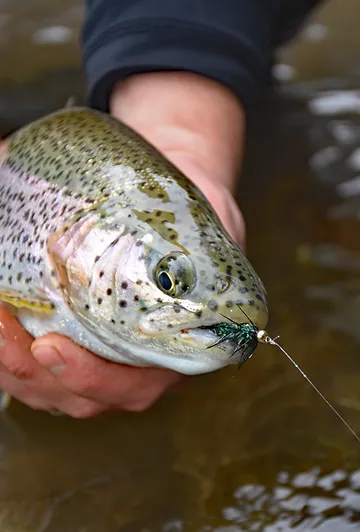
Linn Run State Park
Less than 70 miles from downtown Pittsburgh is quaint and lovely Linn Run State Park. Linn Run, a hikers’ nirvana, is only 612 tiny acres. However, this small state park borders the 50,000-acre Forbes State Forest providing endless options for outdoor recreation.
During the mid-to-late 19th century, the ridges of the Allegheny Mountains were clearcut during Pennsylvania’s lumber era. The primeval trees that covered the mountains surrounding Linn Run were milled into board-feet or used as supports in western PA’s newly constructed mine shafts and tunnels. Bark from the majestic hemlock trees common in these forests were a primary source for tannins used in leather tanneries.
Following this severe and destructive clearcutting, the forests surrounding Linn Run, and all over the Allegheny Mountains, were left as barren wastelands no longer intact nor suitable for wildlife. Worthless treetops left behind by the lumber barons, drying in the hot summer sun, quickly turned into kindling and entire mountainsides became tinder boxes. Sparks strewn into the air from passing steam locomotives, a constant during the industrial revolution, hauling coal to Pittsburgh, ignited devastating wildfires across the region.
This part of Linn Run’s history is sad and destructive, and it remains remarkable that a forest ecosystem can recover from such devastating losses. Evidence of the wildfires can still be seen in the region’s forests by careful observers. Destructive mistakes in the past must serve as a reminder to continue moving forward with responsible timber harvests and forest management practices. Today, Linn Run State Park and the Allegheny Mountains have recovered into thriving, healthy, second-growth forests of mixed conifers and hardwoods. Despite destruction and devastation created by mankind, Mother Nature finds a way to persevere.
Linn Run State Park might very well be the best hiking destination in all of the Laurel Highlands. Most of Linn Run’s short hiking trails link to the far more expansive trail system within the adjacent Forbes State Forest. Available as a free download or in print format from the DCNR, the Laurel Highlands Trail System Map provides hikers detailed routes and descriptions while trekking in this region. Hiking points of interest include Wolf Rocks, Spruce Flats Bog, Beam Rocks, and the Cross Country Skiing Warming Hut. Trails in this region harbor colorful names such as Silvermine, Locust Camp, Outcrop, Brant, Hobblebush, Lippo Loop, Rocky Gap, and Fish Run.
A short 10-minute drive from Linn Run State Park is the historical town of Ligonier, Pennsylvania. This town was the site of the British’s westernmost fortification during the French and Indian War as they pushed to remove the French from the Forks of the Ohio, now present day Pittsburgh. Every fall, the town hosts Fort Ligonier Days to reenact and celebrate the local history of this area. Ligonier is also the home of Idlewild Park, which is among the oldest amusement parks in the United States, and Storybook Forest, a fairytale land for young children. Laurel Mountain includes mountain biking trails, miles of forest roads suitable for gravel riding and road cycling, too for those willing to climb. Cross country skiing, snowshoeing and snowmobiling are popular winter activities.
Staying the night in Linn Run State Park is limited to reserving one of the nine rustic cabins. These small cabins are comfortably furnished with beds, benches, tables, chairs, fireplaces, stoves and refrigerators. Also included are outside fire pits, water spigots, and a modern wash house with hot showers and flush toilets. Up on the ridge, high above Linn Run State Park, is a Forbes State Forest campground that offers a few primitive campsites. This campsite can be found on Jacob Miller Road and can be reserved through the Pennsylvania DCNR.
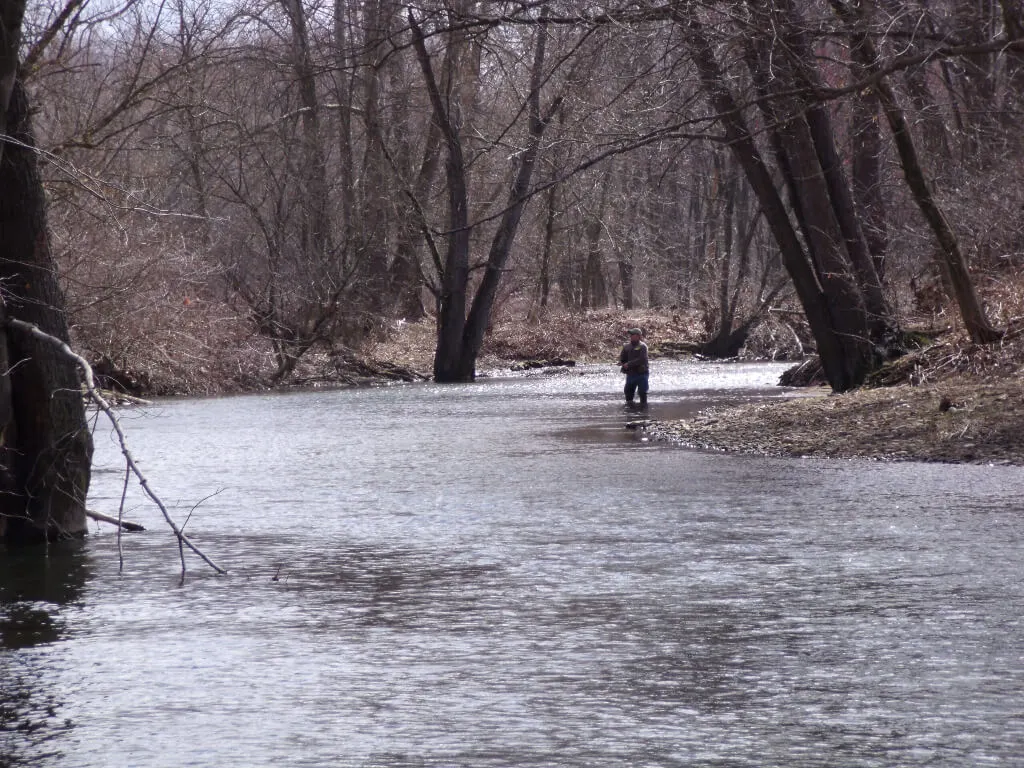
Fishing Linn Run State Park
Linn Run State Park’s namesake stream is an approved trout water that is stocked once preseason with two additional in-season stockings. Linn Run is a small stream averaging 10-15 feet across. What it lacks in size, it makes up for in remarkable beauty with small waterfalls and plunge pools and large angular boulders creating pockets and runs.
Just outside the state park is Loyalhanna Creek, one of the most renowned and heavily-fished Laurel Highlands trout streams. Like many Pennsylvania watersheds, the Loyalhanna has been compromised as a result of abandoned mine drainage (AMD). However, through partnerships with the PFBC, Western Pennsylvania Conservancy, McKenna Foundation, Mellon Foundation, Westmoreland County Conservation and Forbes Trail TU, many of these AMD sites have been mitigated and stream improvement efforts have occurred. Land easements have also been acquired by this partnership in order to preserve the natural beauty and public access opportunities along this ecologically important waterway.
The Loyalhanna is still not known for exceptional hatches. However, as a result of the aforementioned efforts, fishable hatches of several mayfly and caddis species are prevalent.
Loyalhanna Creek is a large Laurel Highlands trout stream averaging thirty feet or more wide. The most popular stretch on the stream must certainly be the heavily-stocked Keystone Select and DHALO that begins at the intersection of state-route 711 and US 30 in downtown Ligonier and extends downstream 1.7 miles to Twomile Run. Access is very easy along this popular section of the stream with many roadside pull offs available along US 30. Just outside of downtown Ligonier, on the banks of the creek, a convenient spot to begin fishing is at the Loyalhanna Watershed Angler & Hiker Parking Lot. This access is the center point of the DHALO and provides anglers with quality fishing both up and downstream.
Blue Knob State Park
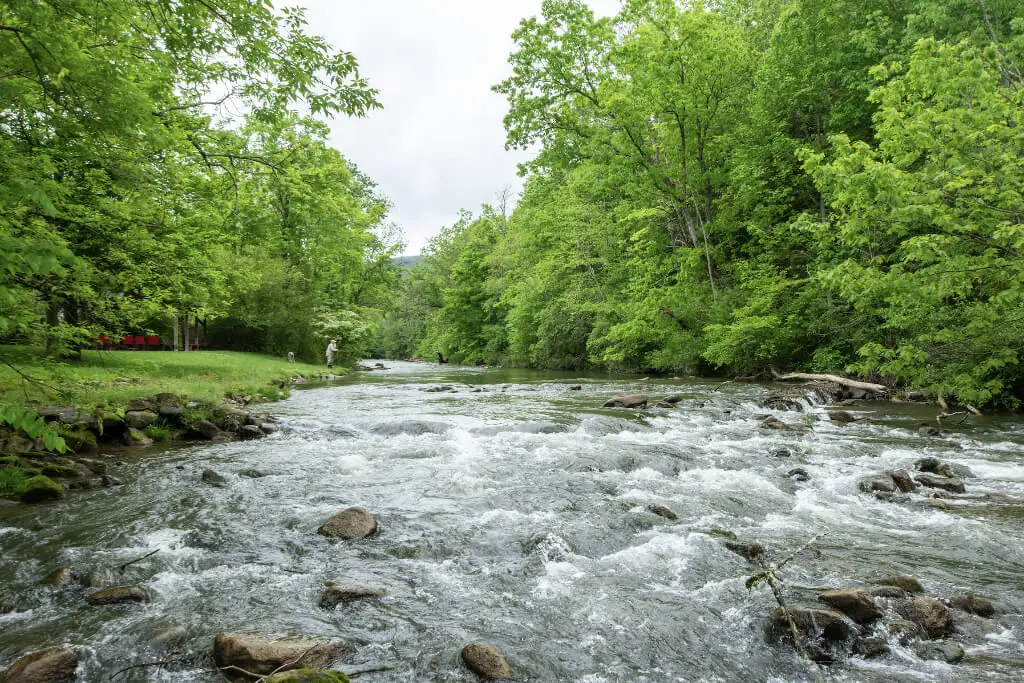
Outside of the Laurel Highlands, yet still within southwestern Pennsylvania, is impressive Blue Knob State Park. This park sits atop Pennsylvania’s Blue Knob, the second highest peak in the state at 3,146 feet above sea level. Because of this increased elevation, temperatures can remain significantly colder than the surrounding areas and annual snowfall averages 12 feet. This unique climate is not conducive for a warm reprieve to escape cold winter temperatures, but it is excellent for winter snow sports including downhill skiing and snowboarding at the Blue Knob All Seasons Resort. The DCNR leases the downhill skiing resort to Alpine Resort Operations that manages and maintains a ski mountain with a vertical drop of 1,050 feet. Other winter activities include cross country skiing, snowshoeing and, snowmobiling.
Blue Knob’s earliest history dates back to homesteaders and farmers of German descent around the time of the American Revolution. These early German settlers farmed the land and built sawmills, grist mills and even several distilleries. Later, like that of the history of Linn Run, the Blue Knob region was largely clearcut during Pennsylvania’s lumber era leading to the destruction of forests and raging wildfires. Remnants of the steep railroads used to haul lumber out of the hills can be seen throughout these mountains. These railroads used five or six switchbacks to traverse the steep mountainsides. It is a remarkable feat of civil engineering constructing these railroads in such steep, rugged country during a time when technology was comparatively primitive.
Again, during the 1930s after the lumber men had packed up their saws and steam shovels, FDR’s Civilian Conservation Corps rolled into Blue Knob and set to work. In 1935, the National Park Service opened the Blue Knob National Recreation Demonstration Area with the support and cooperation of Pennsylvania’s then-governor Gifford Pinchot. On September 26, 1945, Blue Knob State Park was officially opened as the National Park Service transferred the valuable property over to the Commonwealth of Pennsylvania.
Keeping fly fishing in mind, Blue Knob State Park also offers plenty of spring, summer and autumn activities, too. There is a free swimming pool open seven days a week from Memorial Day to Labor Day. Hiking, hunting, picnicking, horseback riding, and mountain biking are also popular park activities. Wildlife viewing at Blue Knob hosts many of Pennsylvania’s regulars including white tailed deer, black bears, fox, turkeys, grouse, and coyotes. Approximately 5,000 acres of the park are open to properly licensed hunters, trappers, and dog trainers during the appropriate seasons. Blue Knob sees its fair share of migrating birds including raptors and songbirds alike. The abundant red and sugar maples create spectacular scenes of autumn foliage colors!
Of all of the state parks in the state, Blue Knob might genuinely be the best four-season option available!
Staying the night at Blue Knob State Park affords visitors several options. Fifty tent and trailer sites are available, most of which include electric hookups. Playground equipment and modern restrooms are made available in the campground area. Three cabins are available for rent and these include modern amenities such as heat, air conditioning and indoor plumbing with showers. There is even a ranch-style house for rent named The Twin Fawn House for those looking for an extended stay with family to enjoy all of the outdoor recreational activities that Blue Knob State Park offers.
Fishing the Blue Knob State Park Region
Fishing within the park boundaries can be done in a small freestone stream named Bob’s Creek. This stream flows through Blue Knob State Park and State Game Lands 26. The section of Bob’s Creek in the park parallels Monument Road and is stocked with hatchery trout and also hosts a population of wild brown trout and native brookies. The uppermost section on SGL 26 remains hike-in only and is unstocked for it possesses a Class A designation. Fishing here is for wild brown trout.
Pennsylvania’s limestone spring creeks are very well known far beyond the reaches of the state’s borders. It is no secret that Centre County, Poe Paddy, the town of Spruce Creek and the Cumberland Valley harbor some of the most renowned limestone spring creek trout fishing in the world. What is far less known is that Pennsylvania’s vast limestone deposit extends west into southwestern Pennsylvania’s Bedford County. And it is here that the state’s lesser known great limestoner, Yellow Creek, is found.
It would be a sin for those fly fishermen visiting Blue Knob State Park to not make the 30-minute drive southeast to the Loysburg Gap to fish Yellow Creek. Yellow Creek is a premiere limestone spring creek with wild trout and exceptional fly hatches. This stream includes classic spring creek meadows, riffles and pocket water, long slicks, fast runs, and large, deep pools. Rising trout, some of which will challenge the most talented dry fly fishermen, can nearly always be found somewhere on any given day of the year on this creek. Euro nymphing, matching a hatch, stripping a streamer, or fishing summertime terrestrials all produce fish given the situation and current conditions on Yellow Creek. This creek is legitimately a premiere limestone fishery. Nevertheless, it does receive significant angling pressure and Yellow’s trout are not pushovers that readily jump on errantly-presented flies. Bring your A-game to catch trout here. In years past, I have had 20-plus fish days on Yellow Creek. On others, I stopped at the supermarket on the drive home to buy a fish because Yellow Creek took me to school.
The most popular and accessible stretch on Yellow Creek is the Catch and Release Fly Fishing Only section. This section of stream, off of PA 36 on Jack’s Corner Road, is a bit challenging to find so consult a guide book or map before making the trip. A small sign marks a gravel roadway through the woods that leads to parking and stream access. Take a moment to read the placard about the project water’s history. The Fly Fishing Only section of Yellow Creek lies largely within private property. Public access is at the discretion of generous landowners. Visiting anglers must remain appreciative and courteous in order to preserve this privilege for future fishing seasons to come.
The project water on Yellow Creek receives both stocked adult rainbow trout by the Pennsylvania Fish and Boat and has a Class A population of wild browns.
Concluding Thoughts
Southwestern Pennsylvania does not possess countless miles of isolated, wilderness Class A trout streams like other parts of the state. Nor does it harbor fertile limestone spring creeks teeming with wild browns like the central region. There are no intact populations of native brook trout like those of the Poconos. As a matter of fact, it is regularly argued that southwestern Pennsylvania is the worst corner in the best overall state for trout fishing east of the Mississippi River.
However, living in southwestern Pennsylvania, I have come to love fly fishing for trout in this region, especially the streams of the Laurel Highlands. I have also come to recognize that the state parks within this region serve as hubs and base camps to explore this fly fishing coupled with many more outdoor recreation opportunities. I welcome visitors to enjoy these state parks, experience the outdoors and explore the excellent fly fishing along with me.
Did You Find This Article Helpful?
Stay up to date with the Dark Skies Fly Fishing monthly newsletter for free and receive the latest posts in fly fishing news, tricks, tips, and techniques, stream reports, as well as updates on new flies added to the Online Store and exclusive discounts!
Sign Up Now
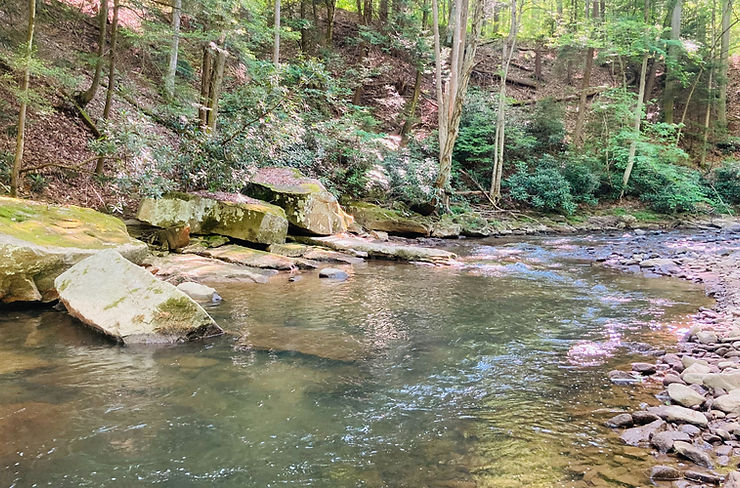
Very nice site Love you information
Great information offered on some of the best fly fishing in the state. Thank you Justin fir the great article. I have fished a few of the places mentioned in the article and Justin was spot on. Thank you for sharing!
Thank you, Mr. Bauer, for your kind words and feedback. I’m stoked that you enjoyed the article. Thank you for your interest and support for DSFF. I look forward to getting back on the water with you, my friend.
Excellent Content. Love the site.
Thank you, Burch! Much appreciated.
Thank you, Burch, for reading this selection. Super stoked that you enjoyed the content. Looking forward to fishing with you in April and then again in June.